Long Haired Hare
8.2 /10 1 Votes
Music director Carl Stalling Duration | 8/10 IMDb 7.9/10 Letterboxd Genre Family, Animation, Short Language English | |||||||||||||||||||||||||||||||||
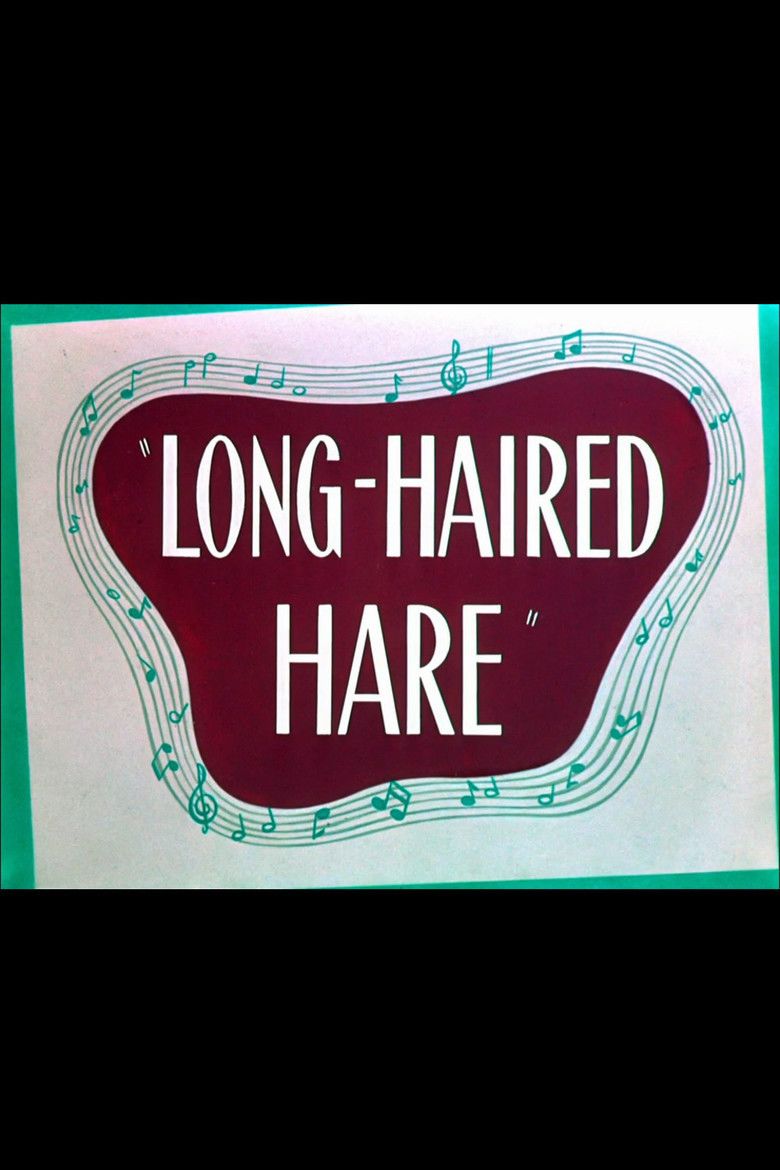 | ||||||||||||||||||||||||||||||||||
Release date June 25, 1949 (1949-06-25) Similar movies Daffy Duck's Movie: Fantastic Island , , Carnival of the Animals , The Big Snooze , Rabbit Fire , Rabbit Seasoning | ||||||||||||||||||||||||||||||||||
Bugs bunny long haired hare
Long-Haired Hare is a 1949 American animated short film directed by Chuck Jones and written by Michael Maltese. It was produced by Warner Bros. Cartoons as a part of the Looney Tunes series. In addition to including the homophones "hair" and "hare", the title is also a pun on "longhairs", a characterization of classical music lovers. Nicolai Shutorov provides the singing voice of Giovanni Jones.
Contents
- Bugs bunny long haired hare
- bugs bunny at the symphony ii long haired hare hollywood bowl
- Plot
- Music
- Analysis
- Availability
- References
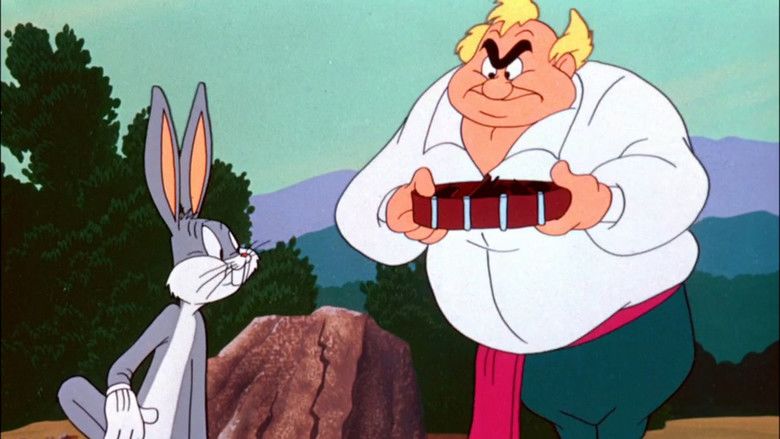
bugs bunny at the symphony ii long haired hare hollywood bowl
Plot

In a hillside Bugs is singing "A Rainy Night in Rio." In a nearby house, a burly, blond-haired opera singer named Giovanni Jones rehearses "Largo al factotum" from The Barber of Seville. Overhearing Bugs, he absent-mindedly finds himself singing along in operatic style. Realizing that he accidentally switched genres, Giovanni loses his temper over his rehearsal being interrupted in this manner. Giovanni angrily confronts Bugs singing by destroying the banjo strings and the banjo itself in two, crushing the neck and then slamming the body over Bugs' head. ("Music-hater," Bugs guesses.)
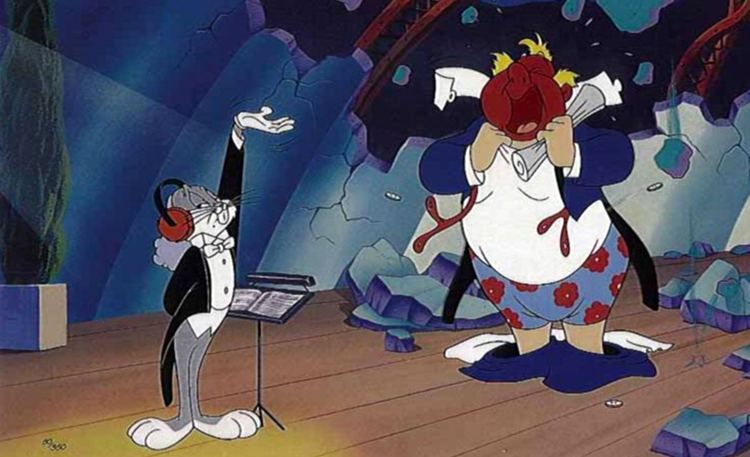
As Giovanni practices again, he hears Bugs singing "My Gal is a High-Born Lady". He tries to ignore Bugs, but again ends up singing and dancing along. Giovanni angrily retaliates by crushing the harp with Bugs trapped between the strings ("Hmm, also a rabbit-hater - oh, well," Bugs counters.)

As Giovanni tries to sing again, the sound of a Tuba seems to come out of his mouth. The sound is coming from Bugs playing "When Yuba Plays the Rhumba on the Tuba". Though he ducks into his hole after seeing him approach, Giovanni pulls Bugs out of the tuba, ties his ears to a tree branch and pulls him down so that he bounces up and down beneath the branch, bonking his head repeatedly. As Giovanni walks away, Bugs decides its time for payback, and starts saying his famous line: "Of course you know, this means war!"
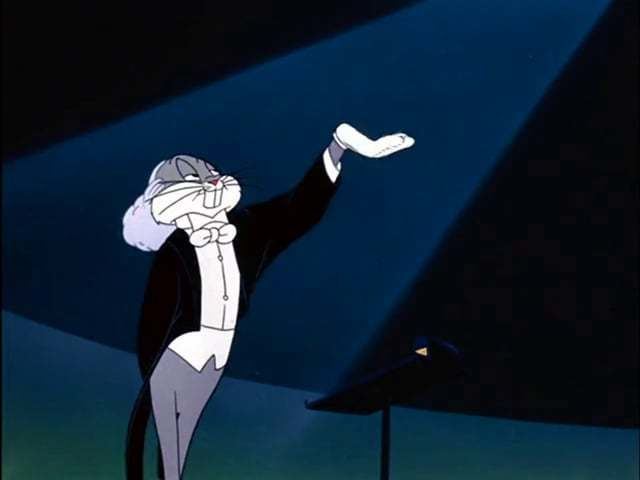
Bugs exacts his revenge against Giovanni though a series of public humiliations during his concert (seemingly at the Hollywood Bowl). First, Bugs vibrates the roof of the concert hall to disrupt the singer's vocals. Then he hammers it so Giovanni moves across the stage and falls and gets trapped in the tuba. Bugs pulls him out and takes him backstage. Next Bugs sprays Giovanni's throat with "liquid alum" which shrinks his head as well as his voice as he sings the "Figaro" part.
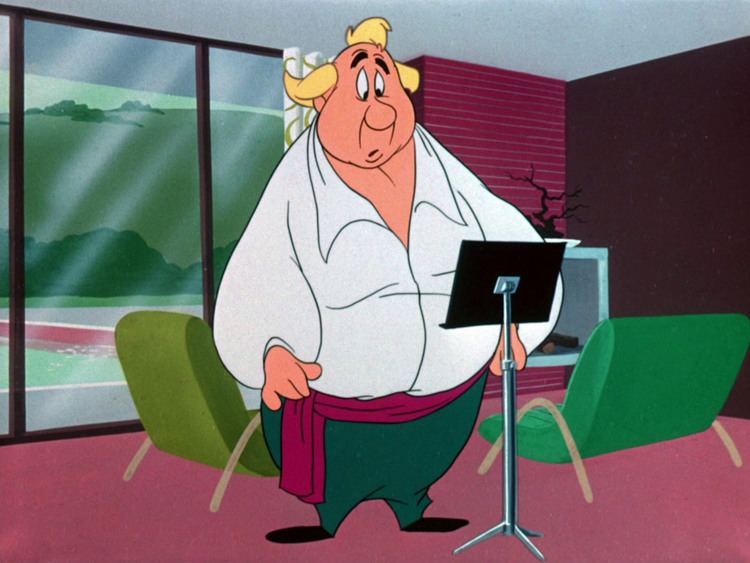
Next, Bugs dresses up as a teenage bobby soxer and asks Giovanni for an autograph ("Frankie and Perry just aren't in it!"), only the pen is a stick of dynamite. After the off-screen explosion, Giovanni steps out to the stage with a singed face and evening wear torn to shreds. He takes a couple of bows and then collapses.
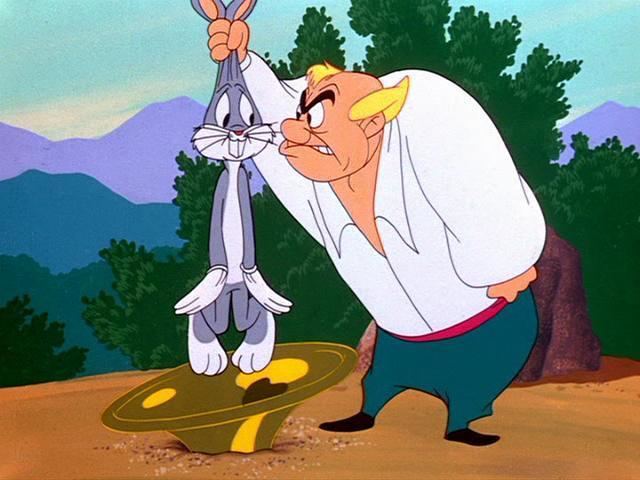
During the concert's final act, Bugs poses as the highly respected Leopold Stokowski, prompting Giovanni, the musicians and conductor to acknowledge him as he takes over the conducting duties. Destroying the baton and using his hands instead (as did the real Leopold), Bugs makes Giovanni sing different notes, including a very low D note. After accepting brief applause (which is instantly stopped when he raises his hand), Bugs cracks his knuckles, winds up his fists, and conducts Giovanni into holding a singular high G note until Giovanni can hardly endure the strain. His face turns red, blue and green as he squirms and unravels his formal wear. Bugs leaves his glove hovering in the air and steps outside to order a pair of earmuffs which are delivered instantly after Bugs places the order in the mailbox. Bugs returns to the stage to find Giovanni has obeyed the glove and is still singing the high note, now thrashing about on the floor banging his fists, his face still turning various colors. Finally, the top of the concert hall's shell shatters and tumbles down on top of Giovanni.
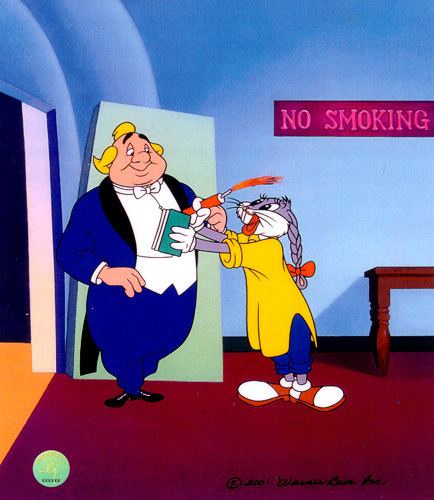
For the encore, a roughed-up Giovanni (whose hair is now reddish) appears out of the rubble to take a bow. Witnessing one last piece of the amphitheater balanced on a steel beam above Giovanni, Bugs again cues the singer to close out his performance with the high note so that the piece falls and crushes him off camera. Satisfied with his victory, Bugs removes his wig and ends the performance by taking out another banjo and starts playing the Vaudeville-era four-note riff, "Good Evening Friends".
Music
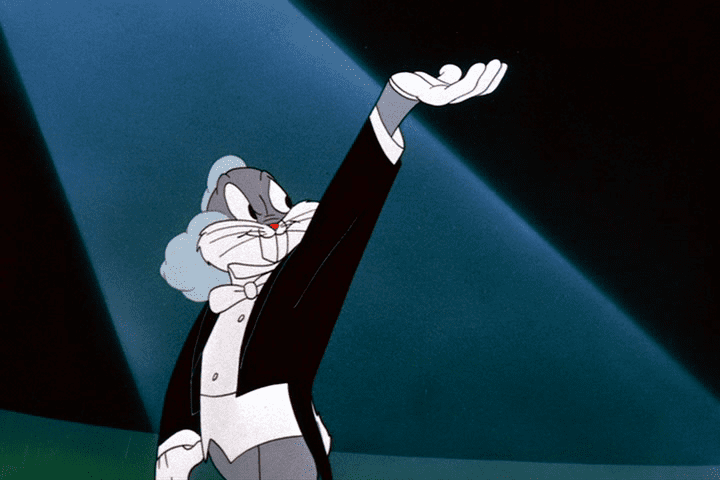
The film's musical score includes original music by Carl Stalling, but a significant proportion of the score is pre-existing music, including several operatic pieces. The soundtrack includes "Largo al factotum" from Act I of Gioachino Rossini's The Barber of Seville; Arthur Schwartz's "A Rainy Night in Rio"; Barney Fagan's "My Gal is a High-Born Lady"; Herman Hupfeld's song "When Yuba Plays the Rumba on the Tuba" – played by Bugs on a sousaphone; the sextet "Chi mi frena in tal momento" from Act II of Gaetano Donizetti's Lucia di Lammermoor; the 2nd theme from the Prelude to Act III of Richard Wagner's Lohengrin; the overture from Franz von Suppé's operetta Die schöne Galathee; and the melody to "It's Magic." This last piece is also used in the cartoon Transylvania 6-5000. The Barney Fagan 1896 song had a racially stereotyped subject and lyrics. The author of the re-written lyrics used in the cartoon might be Carl Stalling or Michael Maltese. The Donizetti piece, originally a sextet that comprises part of the opera's Act II finale, seems to have been a favorite of Warner music arranger Carl Stalling, and is also used in Book Revue and Back Alley Oproar.
Giovanni Jones' singing voice remained uncredited and unknown for many years, but the DVD commentary identifies him as baritone Nicolai G. Shutorov (1914-1948). Hare was the only known film role for Shutorov, who had otherwise worked in Hollywood as a choral singer.
Also noted on the DVD commentary is Bugs Bunny's conducting performance as "Leopold", as a send-up of conductor Leopold Stokowski's energetic style, including his shunning the baton: Bugs makes a point of snapping the baton in half and discarding it. As Bugs enters the concert hall wearing a Stokowski-like hairpiece, the orchestra members begin whispering among themselves, "Leopold! Leopold!" The DVD commentator also notes that Stokowski conducted many performances at the Hollywood Bowl, where the second half of this film is set. Stokowski was, at the time, one of the best known conductors in the world through personal appearances, recordings, and radio, and also took part in several motion pictures including One Hundred Men And A Girl and Carnegie Hall; however, the most famous film in which he participated, Fantasia (1940), was a difficult production for Warner Brothers' rival Walt Disney Productions that did not earn back its cost until 1970.
Analysis
According to Daniel Goldmark, the first two minutes of the cartoon establish a struggle between classical music and popular music. Giovanni acts as if protecting the world of "good" music from the ignorant masses which Bugs represents. The folk melodies which Bugs sings are featured as infectious and treated as disease by Giovanni, acting as a representative of the musical establishment. Each time that Giovanni finds himself singing to one of Bugs' songs, his first reaction is shock, followed by fury that he is wasting his voice on less refined music. Goldmark finds similarities with The Band Concert (1935), where Donald Duck insists on playing Turkey in the Straw and infuriates Mickey Mouse.
Bugs is established as an anti-aesthete first by his initial choice of musical organ, the banjo. Secondly, he performs in a backwoods setting, as opposed to Giovanni's modern house. Thirdly, he sings from memory while Giovanni uses sheet music. He is also implied to be an untrained musician, contrasting with the trained Giovanni. A further contrast is implied through the geographic origin of their songs. Bugs sings American popular songs, while Giovanni' repertoire is Western European in origin.
The orchestral musicians featured in the short have little to no personality. Their identity depends only on their instrument. Chuck Jones would follow this idea with similar personality-less depictions in the Rabbit of Seville (1950) and Baton Bunny (1959). This contrasts with orchestra-driven animated shorts by other creators.
By assuming the position of the conductor, Bugs places himself at the top of the musical hierarchy. He forces Giovanni into an improvised vocalization which spans his entire range and an exercise of all his technical skills. He then forces Giovanni to hold a painful, long high G, which brings the Hollywood Bowl crashing down on the singer. Bugs assumes the stereotypical attributes of famous conductors, displaying majesty, arrogance, and tyrannical behavior. He also follows the dress code of the concert hall by wearing white tie and tails, formal wear which is still associated with performers.
Availability
References
Long-Haired Hare WikipediaLong-Haired Hare LetterboxdLong Haired Hare IMDb Long Haired Hare themoviedb.org
